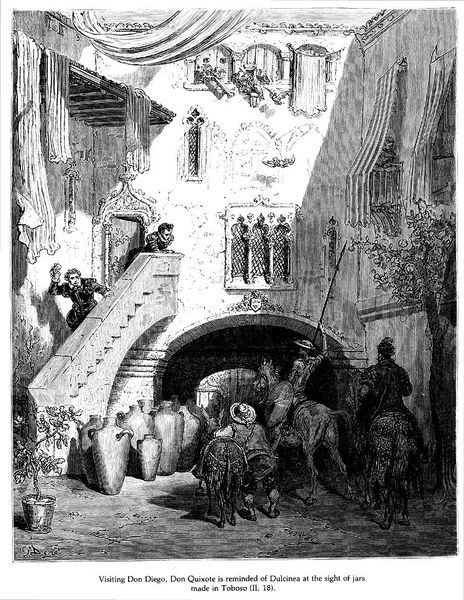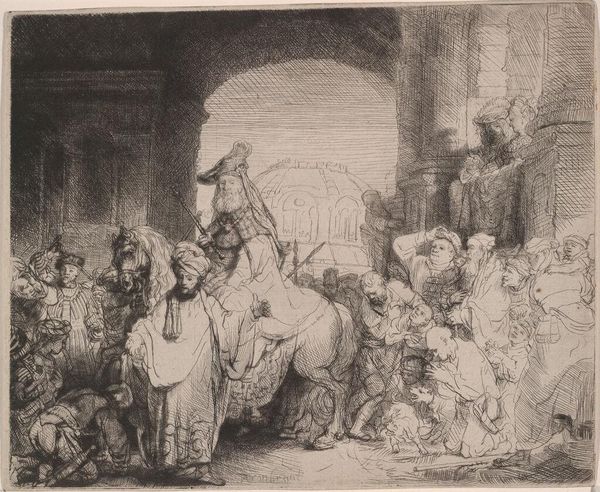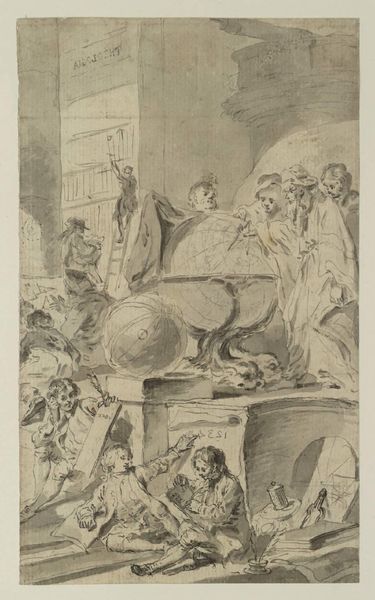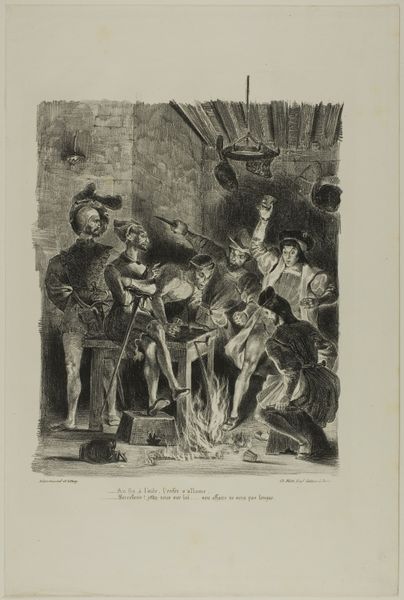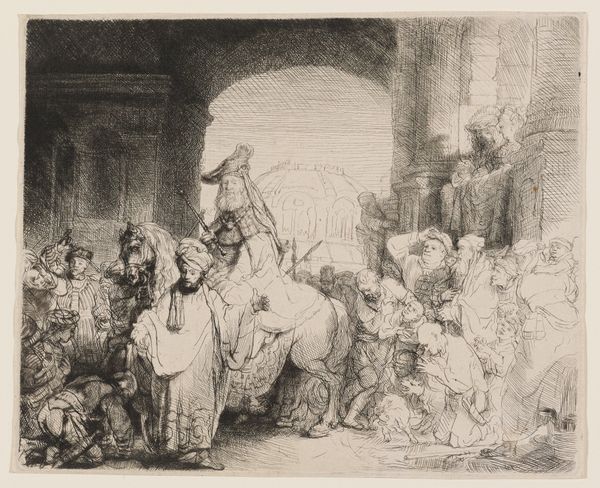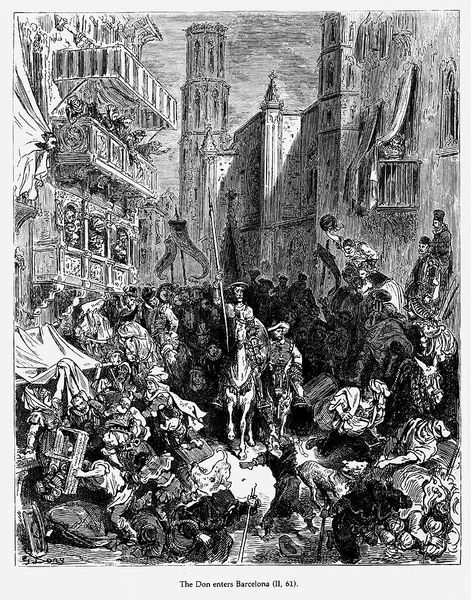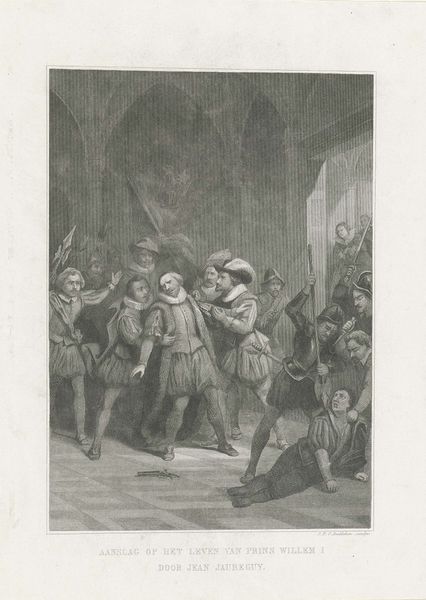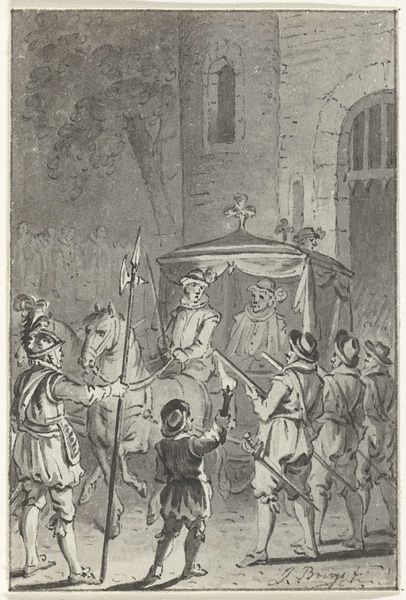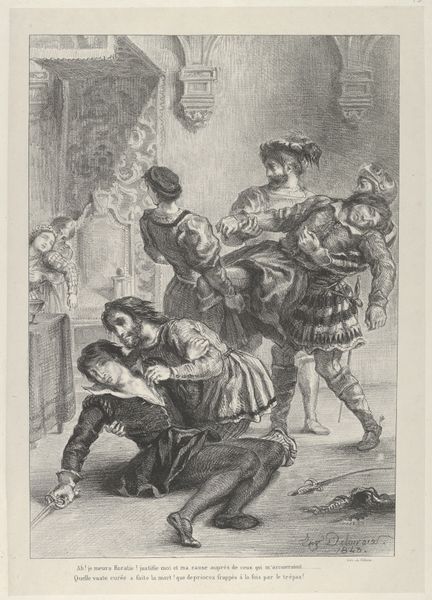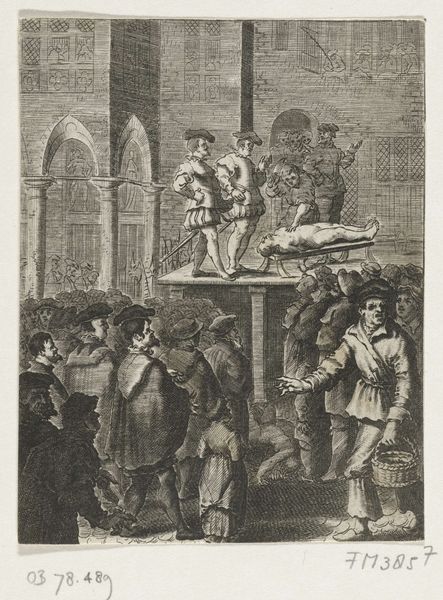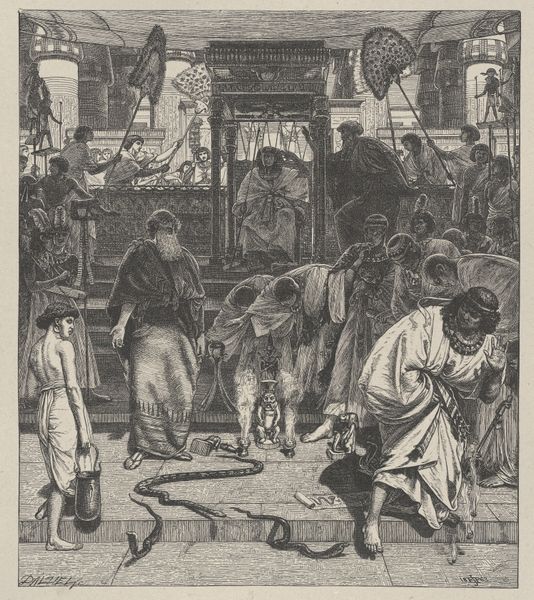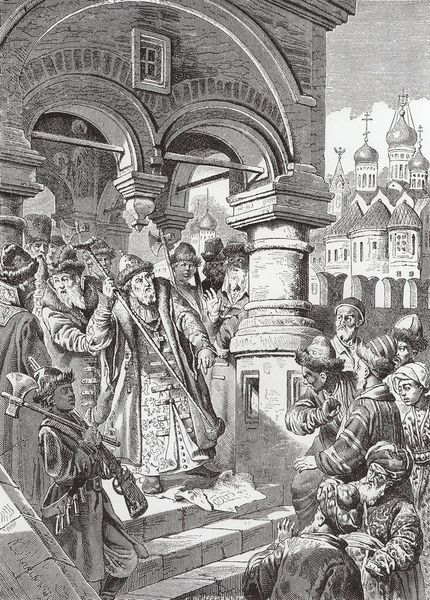
Copyright: Public domain
Editor: Here we have Gustave Dore's "Gargantua", an engraving from 1873. The density of the figures and architectural detail is astounding. There's such an overwhelming quality to the crowd surrounding the titular giant that leaves me a little disoriented. What strikes you when you examine this work? Curator: Primarily, it's the dynamism achieved through contrasting textures and the manipulation of line. Dore’s masterful use of cross-hatching creates depth and volume. The corpulent figure of Gargantua is brought to life by precise control of shadow, light, and the direction of the strokes. Note the juxtaposition of this fleshy, oversized figure with the precisely delineated architecture and accoutrements of the courtiers. Do you notice how the vertical lines of the buildings and figures act as an anchor for the swirling composition? Editor: Yes, the contrast between the stable vertical lines and the rounded forms of Gargantua makes him even more prominent! What effect does this romantic style of figuration contribute to the print? Curator: It intensifies the drama. Dore utilizes the romantic aesthetic to play with exaggeration and the grotesque, turning a potentially simple narrative scene into a grand spectacle of overindulgence and the carnivalesque. Notice the lines almost vibrate with tension, illustrating chaos without sacrificing precision. How do you see the placement of Gargantua functioning within this energetic configuration? Editor: He seems to be both at the center and somehow struggles to be part of this society. It’s interesting how his placement reflects an idea of simultaneously belonging and being isolated. I hadn’t noticed how purposeful those choices in the composition were! Curator: Indeed! And that interplay, articulated through the language of line and form, creates the artwork's inherent tension and its lasting impact on the viewer.
Comments
No comments
Be the first to comment and join the conversation on the ultimate creative platform.
